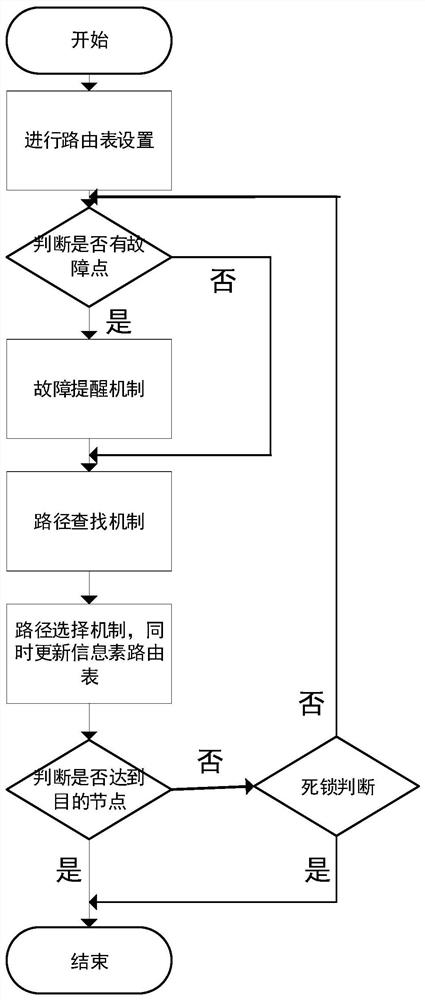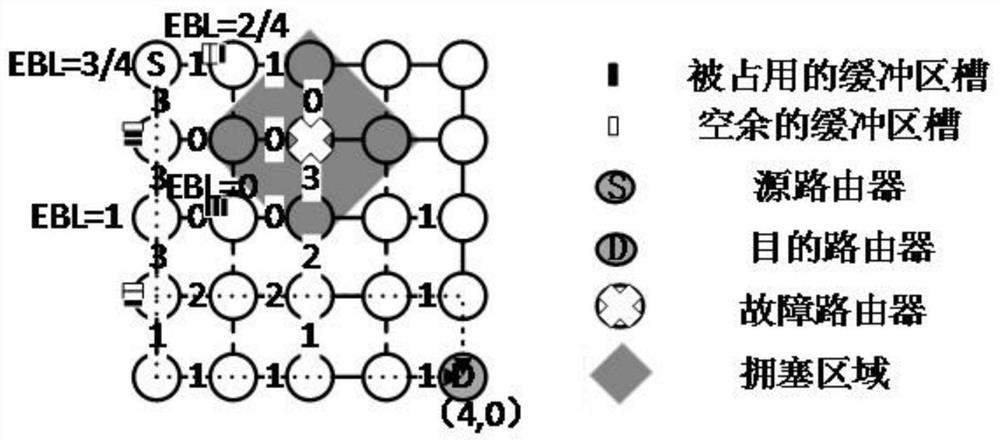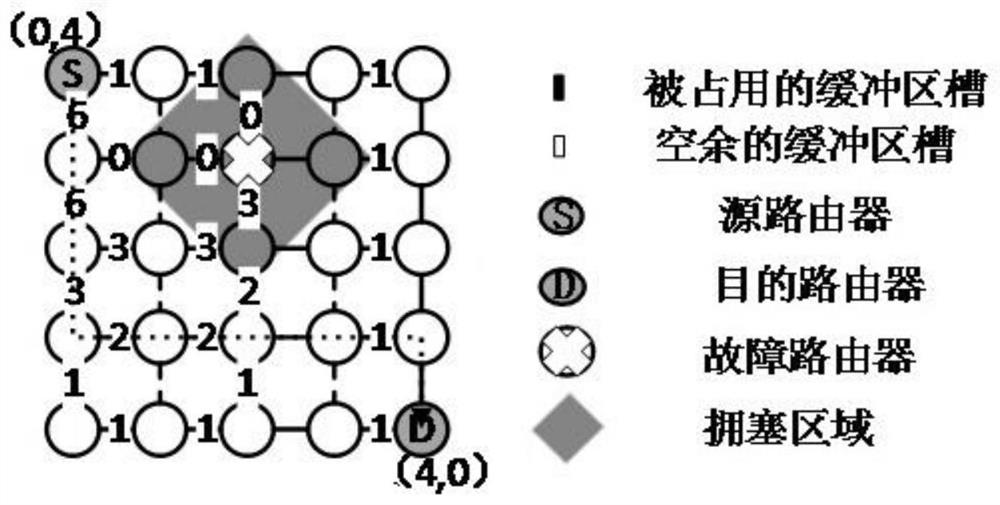A fault-tolerant adaptive routing method based on ant colony algorithm
An ant colony algorithm and self-adaptive technology, applied in computing, computing models, instruments, etc., can solve the problems of reducing delay, routing table storage overhead, singleness, etc., to achieve the effect of reducing data transmission delay and realizing network load
- Summary
- Abstract
- Description
- Claims
- Application Information
AI Technical Summary
Problems solved by technology
Method used
Image
Examples
Embodiment
[0037] Such as figure 1 As shown, a fault-tolerant adaptive routing method based on ant colony algorithm includes the following steps:
[0038] Step 1 Initialize the routing table:
[0039] In a two-dimensional network, a two-dimensional coordinate system is used to mark the position of each node. In addition to the conventional storage entry and exit nodes, the routing table also needs to add pheromones, FPDs and FVs.
[0040] Among them, pheromone is used in ant colony algorithm; FPD is used to calculate EBL; FV is used to record whether the distance between the node and the fault node has an impact on pheromone.
[0041] Step 2 Check the faulty node:
[0042] Start the self-test circuit in the chip. Generally, the chip contains a self-test circuit, and the self-test circuit is used to check whether there is a faulty node. If yes, mark these faulty nodes and go to step three; if not, go to step four.
[0043] Step 3 Start the fault reminder mechanism:
[0044] Start the...
PUM
 Login to View More
Login to View More Abstract
Description
Claims
Application Information
 Login to View More
Login to View More - R&D
- Intellectual Property
- Life Sciences
- Materials
- Tech Scout
- Unparalleled Data Quality
- Higher Quality Content
- 60% Fewer Hallucinations
Browse by: Latest US Patents, China's latest patents, Technical Efficacy Thesaurus, Application Domain, Technology Topic, Popular Technical Reports.
© 2025 PatSnap. All rights reserved.Legal|Privacy policy|Modern Slavery Act Transparency Statement|Sitemap|About US| Contact US: help@patsnap.com



